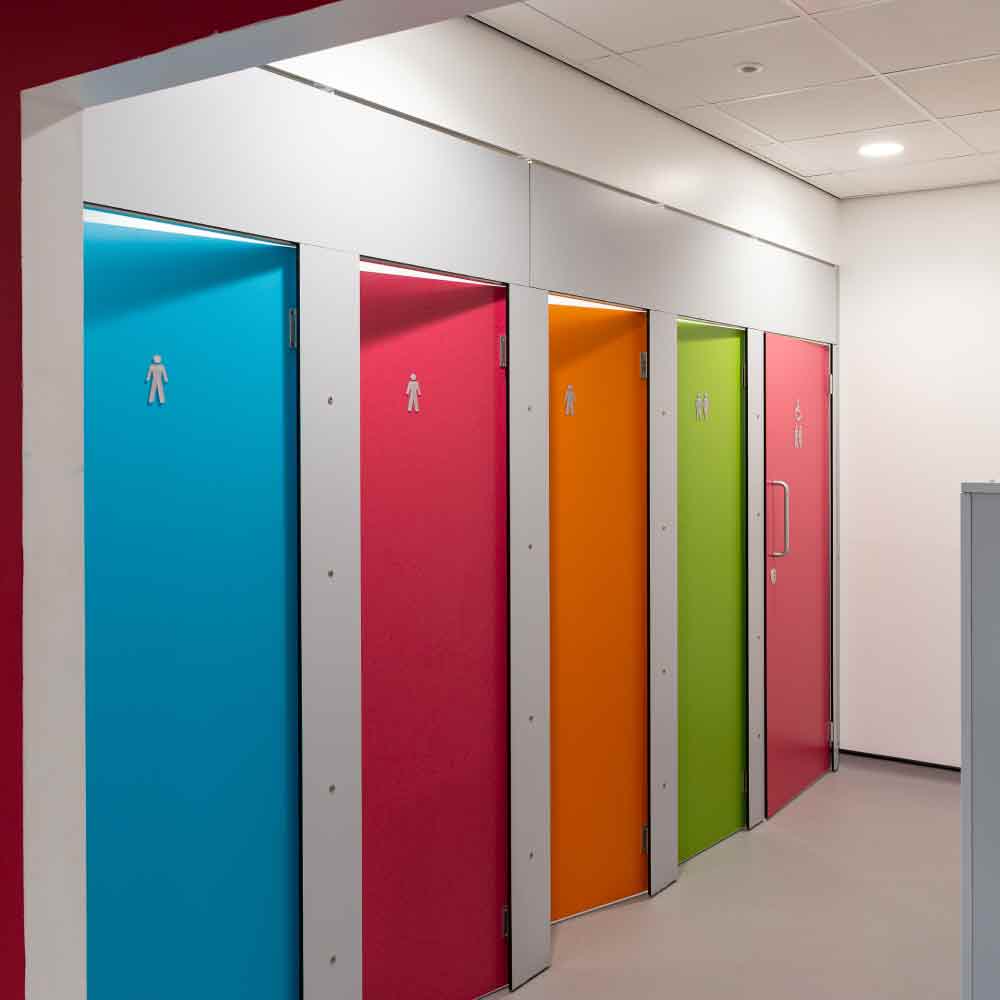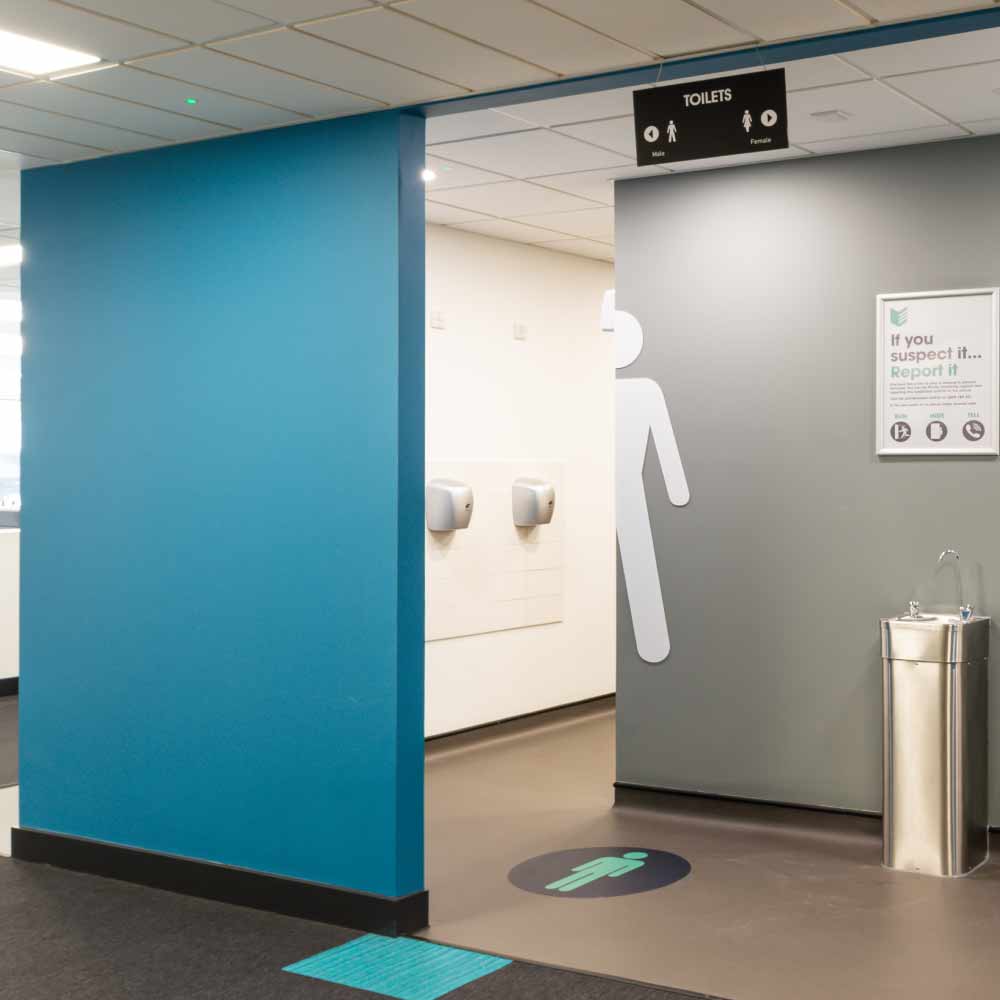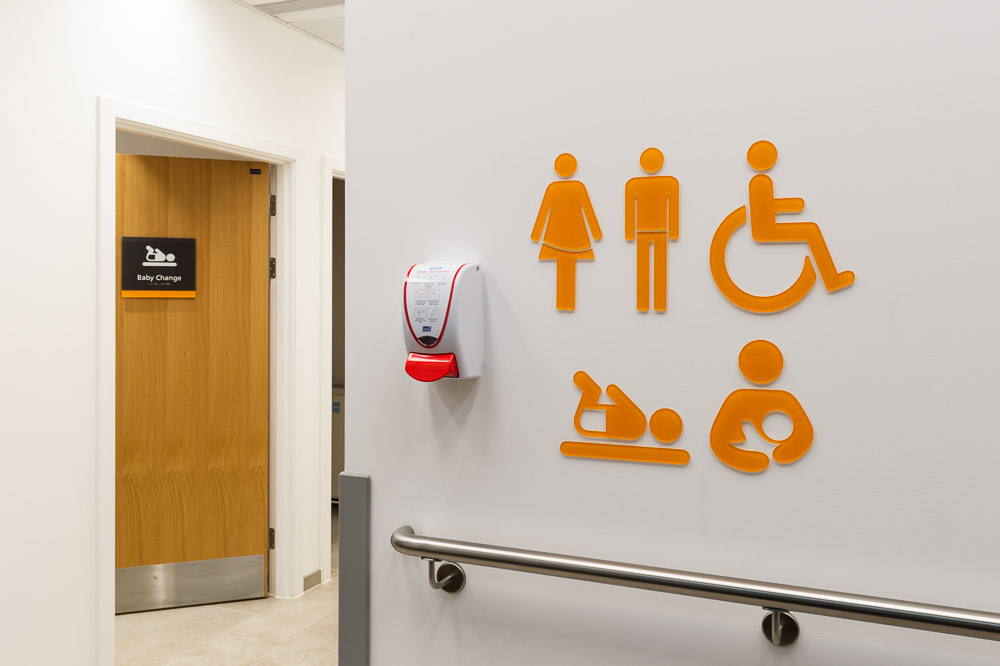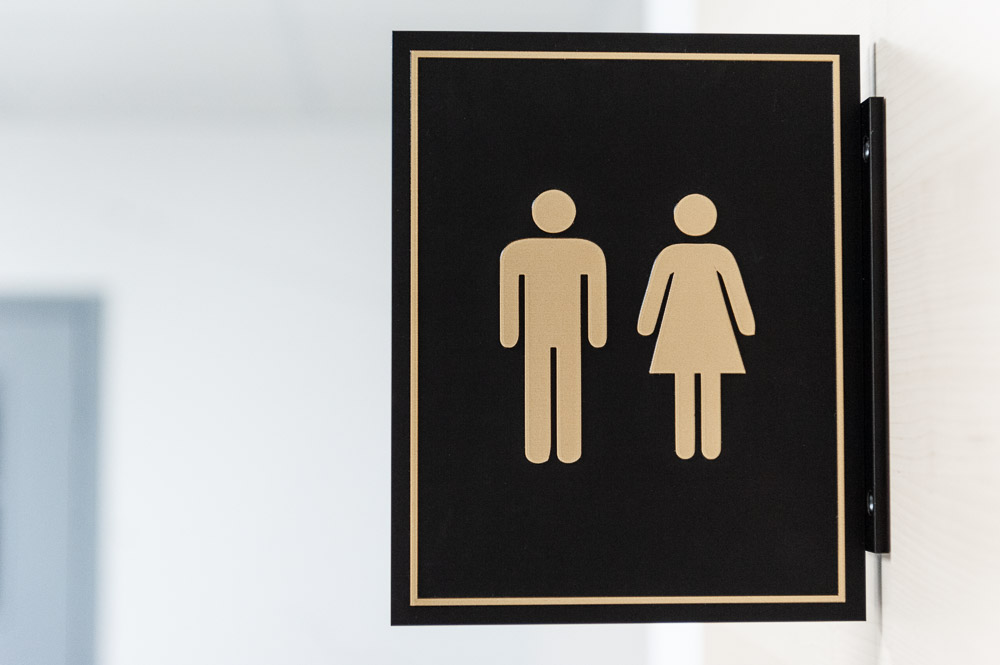People with disabilities still face challenges finding accessible toilets in public spaces, and much of that frustration comes from inadequate signage. On top of that, there’s the issue of gendered bathrooms and how these can be a barrier to many individuals. If you’re in the process of adding restrooms to your facility or plan on renovating, this post will show you how to create inclusive toilet signs that work for everyone.
Make all toilet signs clear and visible
One of the main issues we see in many buildings is a lack of adequate toilet signage. It’s often difficult to find toilets in a venue, and even more so if the disabled toilet is in a separate location.
Make sure there are visible toilet signs throughout your premises that are easy to follow. Toilets are usually hidden away in a corner somewhere, so think about the wayfinding needed to guide someone to the facility.
This should include written signage, symbols, and Talky signs to be inclusive to all visitors.
Symbols and door signs
Next, think about the wording and symbols used to denote the toilets. Although it can be tempting to use slang or unique symbols or pictograms on bathroom doors to add some personality, this usually ends up confusing visitors.
Instead, it’s best to use clear fonts and recognisable symbols using your brand’s style and colours. This way, the signs are clear and easy to understand but are still in keeping with your business.


Gender-neutral bathroom signs
The debate over the use of gender-neutral bathrooms has been heating up over the past couple of years. Standard bathrooms only cater for men and women, so they exclude non-binary individuals and create inclusivity issues for transgender visitors.
The standard pictograms of a man and woman usually used on toilet doors reinforce gender stereotypes and can lead to people feeling excluded or uncomfortable about knowing which toilet to use.
If you do have a gender-neutral bathroom in your facility, opt for a toilet symbol rather than the standard male and female icons. This makes it clear that the room beyond is a bathroom and is inclusive of all genders. You can also add “Unisex Toilet” with the matching braille and Talky sign to make it as clear and inclusive as possible.
Accessible toilets
When creating signs for a disabled toilet, many take issue with the traditional pictogram of a person in a wheelchair. This symbol implies that all disabled people use a wheelchair and discounts anyone with a hidden disability.
In fact, this sign reinforces negative stereotypes. It can make it difficult for those with a hidden disability to use an accessible bathroom since people feel emboldened to criticise or pass judgement.
Think about including other symbols alongside the wheelchair symbol to make the bathroom more inclusive. Use text, braille, and a Talky sign to denote the disabled or accessible toilet, and add a sign in your facility that advocates for hidden disabilities.
Experts in inclusive signage
It can be difficult to know how to create the best inclusive toilet signage. Luckily, our team are specialists in inclusive signs and can advise you on the best products for your facility. From gender-neutral bathroom signage to Talky and braille signs for accessible toilets, we can design the best inclusive signs for your bathrooms.


